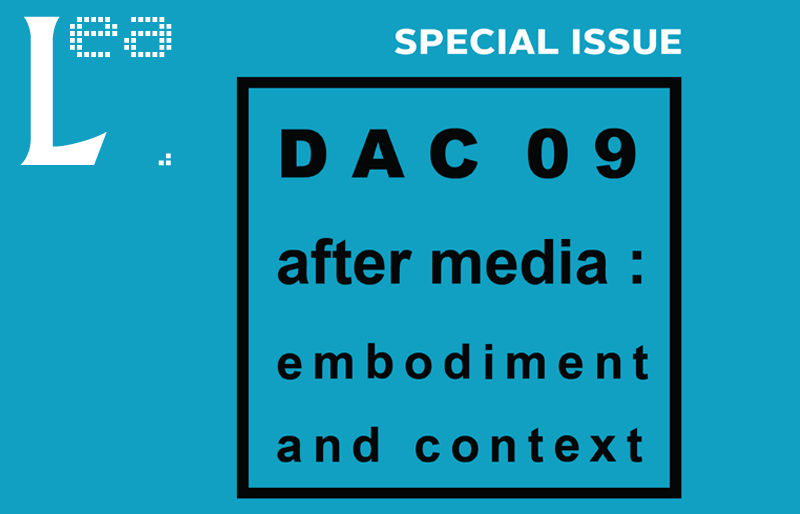
LEA Volume 17 Issue 2
Senior Editors for this volume: Lanfranco Aceti and Simon Penny
ISBN: 978-1906897-16-1
ISSN: 1071-4391
Reference: D. Fox Harrell and S. Veeragoudar Harrell, “Imagination, Computation, and Self-Expression: Situated Character and Avatar Mediated Identity,” eds. Lanfranco Aceti and Simon Penny, Leonardo Electronic Almanac (DAC09: After Media: Embodiment and Context) 17, no. 2 (2012): 74-91.
Imagination, Computation, and Self- Expression: Situated Character and Avatar Mediated Identity
by D. Fox Harrell and Sneha Veeragoudar Harrell
The ability to construct imaginative, computational self-representations such as characters in games and avatars in virtual worlds and social media can impact people’s self-perception in the real world and provide proxies for people to engage in communities as players, learners, and doers. It is clear, however, that some users view characters and avatars instrumentally to accomplish virtual tasks, whereas others see them as virtual selves for playful identity construction and performance. Open questions about design of character/avatar construction tools include better understanding the trade-offs between accommodating representation of aspects of users real selves vs. enabling extraordinary fantastic characters – and how enabling either plays a role in the users’ situated contexts, including the creation of coherent life stories, narratives of personal experience, and narratives of personal identity. This paper provides theory and pilot evidence as steps toward answering these questions. Our evidence was elicited using grounded theory techniques on data collected in a three-year design-based research study into fostering at-risk students’ science, technology, engineering, and mathematics (STEM) learning using virtual world technologies. 1 We propose a three-axis model of user stances in relationship to their avatars. Using insights from the cognitive science theory of conceptual blending in order to characterize users’ perspectives of their avatars as imaginative integrations of their real and virtual selves, we present a set of case studies illustrating users’ stances in terms of our three axes. The upshot is that students in the study tended to fall into one of three categories: (1) viewing their avatars as necessarily reflections of their real world identities, (2) viewing their avatars as mere proxies for building artifacts in the world, and (3) viewing avatars as characters external to themselves for engaging in a play of identity performance and presentation. Group (1) found the affordances of the virtual world tools they used to be inadequate, hence serving the needs of this group may require alternative design solutions in light of real world values, activities, and behaviors.
Full article is available for download as a pdf here.
Vol 17 Issue 2 of Leonardo Electronic Almanac (LEA) is published on line as a free PDF but will also be rolled out as Amazon Print on Demand and will be available on iTunes, iPad, Kindle and other e-publishing outlets.
